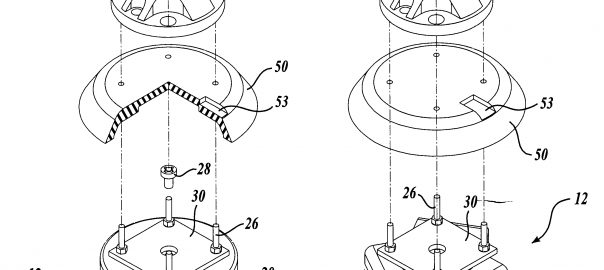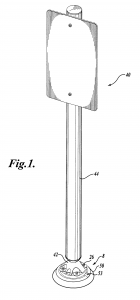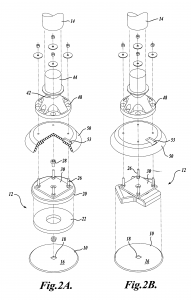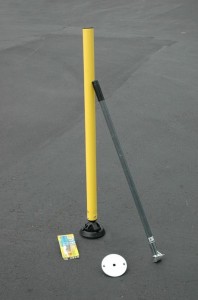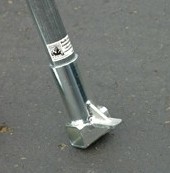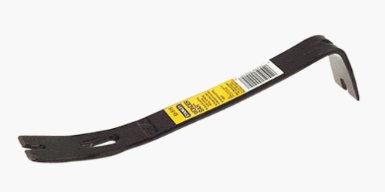If you live in an urban environment — gridded streets, parallel parking, parking meters, and the like — it is possible you’ve seen these little discs epoxied to the sidewalk in regular intervals.
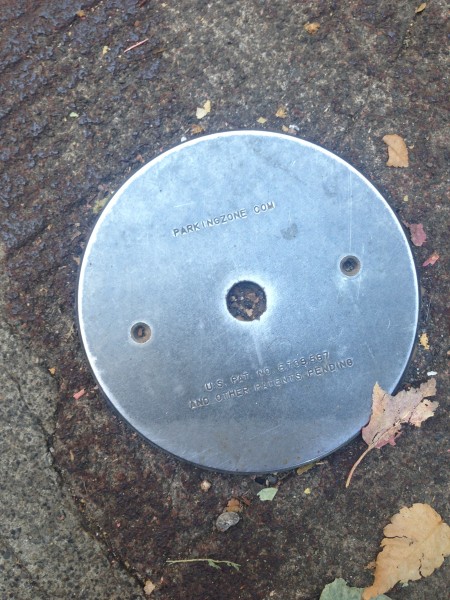
I have always seen them, but never noticed them. At least, not until about a year ago when I saw a worker snap a temporary no-parking post in place atop the disc. It snapped in there solidly in such a way that I instinctively knew that magnets were involved. Of course! I had similarly seen but not noticed the temporary parking signs. They’re put in place with something more permanent than just setting them there, but less permanent than epoxy or bolts. I just hadn’t mentally connected the discs to the posts.
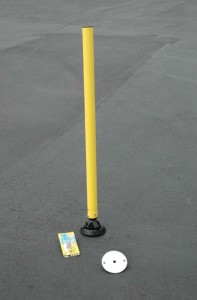
That got me wondering. Was it possible to remove the signs? To move the signs? A few weeks later, with no worker around, I tried. It turns out you cannot do it by hand. Typically with strong magnets attached to a metal surface, your best bet is to slide the magnet to the edge and pry it free at an angle. You are unlikely to be able to yank it straight up. The same applies here, except the bottom of the post has a peg that fits into the middle of the disc, preventing you from sliding it. You can’t get enough grip on the post to pull it up. The joint where it connects to the magnet is flexible, so you can’t even use the post as a lever to pry the magnet up. I assumed you needed some kind of tool and always meant to look it up each time I ran across one of these signs “when I got back to the office.” And of course, upon returning to the office, it slipped my mind (and wasn’t really important enough to add to a to-do list).
Last week I stumbled across a freshly-placed disc. It still had the stamped-in patent number visible. Not only that, it also had a website address! I snapped a quick photo, knowing that I’d be reminded of it later when I went through my camera roll.
Starting with the patent, US Patent 6,739,567, we see something that looks almost exactly like the temporary no-parking sign, a detail of its base, and an alternate base that instead of employing the peg-in-hole technique, skirts around the entire disc. Neither the patent, its citations, nor the other patents directly referencing this one, go into detail about the pry tool.
Next, we venture over to the website, ParkingZone.com. We are greeted by the superheroes of parking, these four characters surrounding the page:

We learn that the marketing name for this technology is Gorilla Post and get a little more insight into a full-length prybar as well as a foot-operated one.
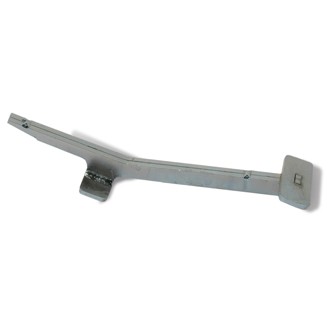
Presumably, you’d be able to use a generic Wonderbar-style prybar just as easily?
As you wander the city streets and come across those metal discs every few meters, you will now know and understand their purpose.
